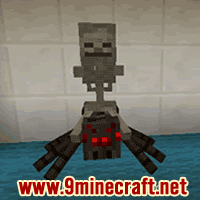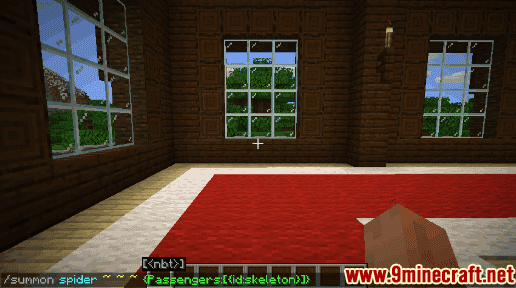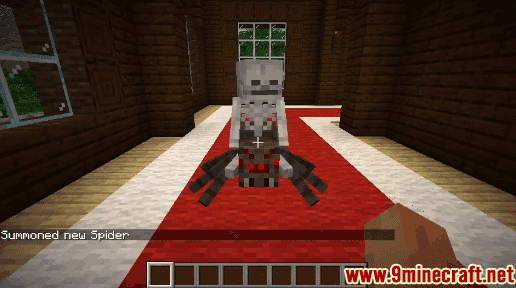How To Summon A Spider Jockey Wiki Guide
This Minecraft tutorial explains how to summon a spider jockey with screenshots and step-by-step instructions.
A spider jockey is a spider with a skeleton riding on its back and is a very dangerous mob. It can climb walls, jump, and shoot arrows at you from a distance. It is very rare for a spider jockey to spawn naturally in the game, but you can summon a spider jockey whenever you want using a cheat (game command) in Minecraft PC. This is done using the /summon command.

Let’s explore how to do this.

Requirements
To run game commands in Minecraft, you have to turn cheats on in your world.
Summon Command
Summon Command in Minecraft Java Edition (PC/Mac)
In Minecraft Java Edition (PC/Mac) 1.11, 1.12, 1.13, 1.14, 1.15, 1.16, 1.17, 1.18, 1.19 and 1.20, the syntax to summon a spider jockey using the /summon command is:
/summon spider [pos] {Passengers:[{id:skeleton}]}
In Minecraft Java Edition (PC/Mac) 1.9 and 1.10, the syntax to summon a spider jockey is:
/summon Spider [x] [y] [z] {Passengers:[{id:Skeleton}]}
In Minecraft Java Edition (PC/Mac) 1.8, the syntax to summon a spider jockey is:
/summon Skeleton [x] [y] [z] {Riding:{id:Spider}}
Definitions
- pos or x y z is optional. It is the x y z coordinate where the spider jockey should spawn. If no coordinate is specified, the spider jockey will spawn in the current location.
- {Riding:{id:Spider}}Â is an optional NBT tag (formeraly called data tag)Â used to specify that the spider is being ridden by a mob (in this case, the skeleton is riding a spider).
- {Passengers:[{id:skeleton}]}Â is an optional NBT tag (formerly called data tag) used to specify that the skeleton is a passenger that is riding on another mob (in this case, the skeleton is riding on a spider).
Examples
Example in Java Edition (PC/Mac) 1.11, 1.12, 1.13, 1.14, 1.15, 1.16, 1.17, 1.18, 1.19 and 1.20
To summon a spider jockey in Minecraft 1.11, 1.12, 1.13, 1.14, 1.15, 1.16, 1.17, 1.18, 1.19 and 1.20:
/summon spider ~ ~ ~ {Passengers:[{id:skeleton}]}
Example in Java Edition (PC/Mac) 1.9 and 1.10
To summon a spider jockey in Minecraft 1.9 and 1.10:
/summon Spider ~ ~ ~ {Passengers:[{id:Skeleton}]}
Example in Java Edition (PC/Mac) 1.8
To summon a spider jockey in Minecraft 1.8:
/summon Skeleton ~ ~ ~ {Riding:{id:Spider}}
How to Enter the Command
1. Open the Chat Window
The easiest way to run a command in Minecraft is within the chat window. The game control to open the chat window depends on the version of Minecraft:
- For Java Edition (PC/Mac), press the T key to open the chat window.
2. Type the Command
In this example, we are going to summon a spider in Minecraft Java Edition (PC/Mac) 1.20 with the following command:
/summon spider ~ ~ ~ {Passengers:[{id:skeleton}]}
Type the command in the chat window. As you are typing, you will see the command appear in the lower left corner of the game window. Press the Enter key to run the command.

Once the cheat has been entered, a skeleton riding a spider will spawn and appear in your world:

You will see the message “Summoned new Spider” appear in the lower left corner of the game window to indicate that the spider jockey has been summoned. You may need to look behind you to see it.
TIP:Â If you summon the spider jockey in the sunlight, the skeleton will burst into flames and die, leaving you with only the spider that it was riding. So we recommend summoning the spider jockey in a dark place.
Congratulations, you have summoned a spider jockey in Minecraft.
Other Skeleton Command Examples
Here are some game command examples for a skeleton in Minecraft:
 How to Summon a Skeleton
How to Summon a Skeleton